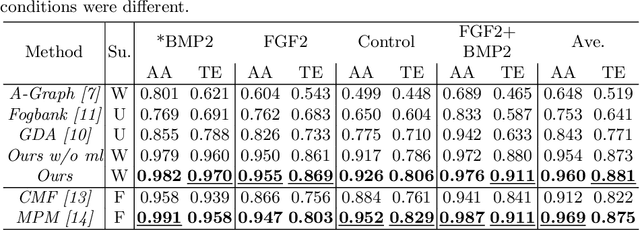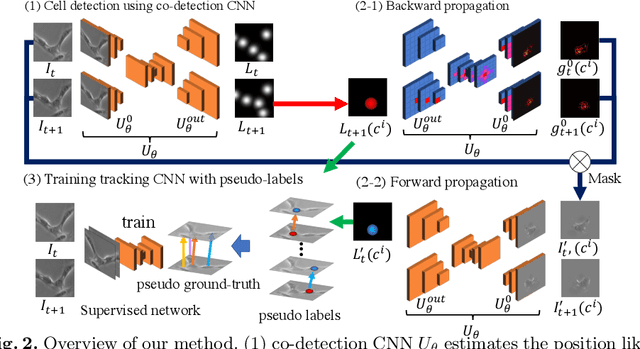Dai Fei Elmer Ker
Weakly-Supervised Cell Tracking via Backward-and-Forward Propagation
Jul 30, 2020



Abstract:We propose a weakly-supervised cell tracking method that can train a convolutional neural network (CNN) by using only the annotation of "cell detection" (i.e., the coordinates of cell positions) without association information, in which cell positions can be easily obtained by nuclear staining. First, we train co-detection CNN that detects cells in successive frames by using weak-labels. Our key assumption is that co-detection CNN implicitly learns association in addition to detection. To obtain the association, we propose a backward-and-forward propagation method that analyzes the correspondence of cell positions in the outputs of co-detection CNN. Experiments demonstrated that the proposed method can associate cells by analyzing co-detection CNN. Even though the method uses only weak supervision, the performance of our method was almost the same as the state-of-the-art supervised method. Code is publicly available in https://github.com/naivete5656/WSCTBFP
Weakly Supervised Cell Instance Segmentation by Propagating from Detection Response
Nov 29, 2019



Abstract:Cell shape analysis is important in biomedical research. Deep learning methods may perform to segment individual cells if they use sufficient training data that the boundary of each cell is annotated. However, it is very time-consuming for preparing such detailed annotation for many cell culture conditions. In this paper, we propose a weakly supervised method that can segment individual cell regions who touch each other with unclear boundaries in dense conditions without the training data for cell regions. We demonstrated the efficacy of our method using several data-set including multiple cell types captured by several types of microscopy. Our method achieved the highest accuracy compared with several conventional methods. In addition, we demonstrated that our method can perform without any annotation by using fluorescence images that cell nuclear were stained as training data. Code is publicly available in "https://github.com/naivete5656/WSISPDR".
 Add to Chrome
Add to Chrome Add to Firefox
Add to Firefox Add to Edge
Add to Edge